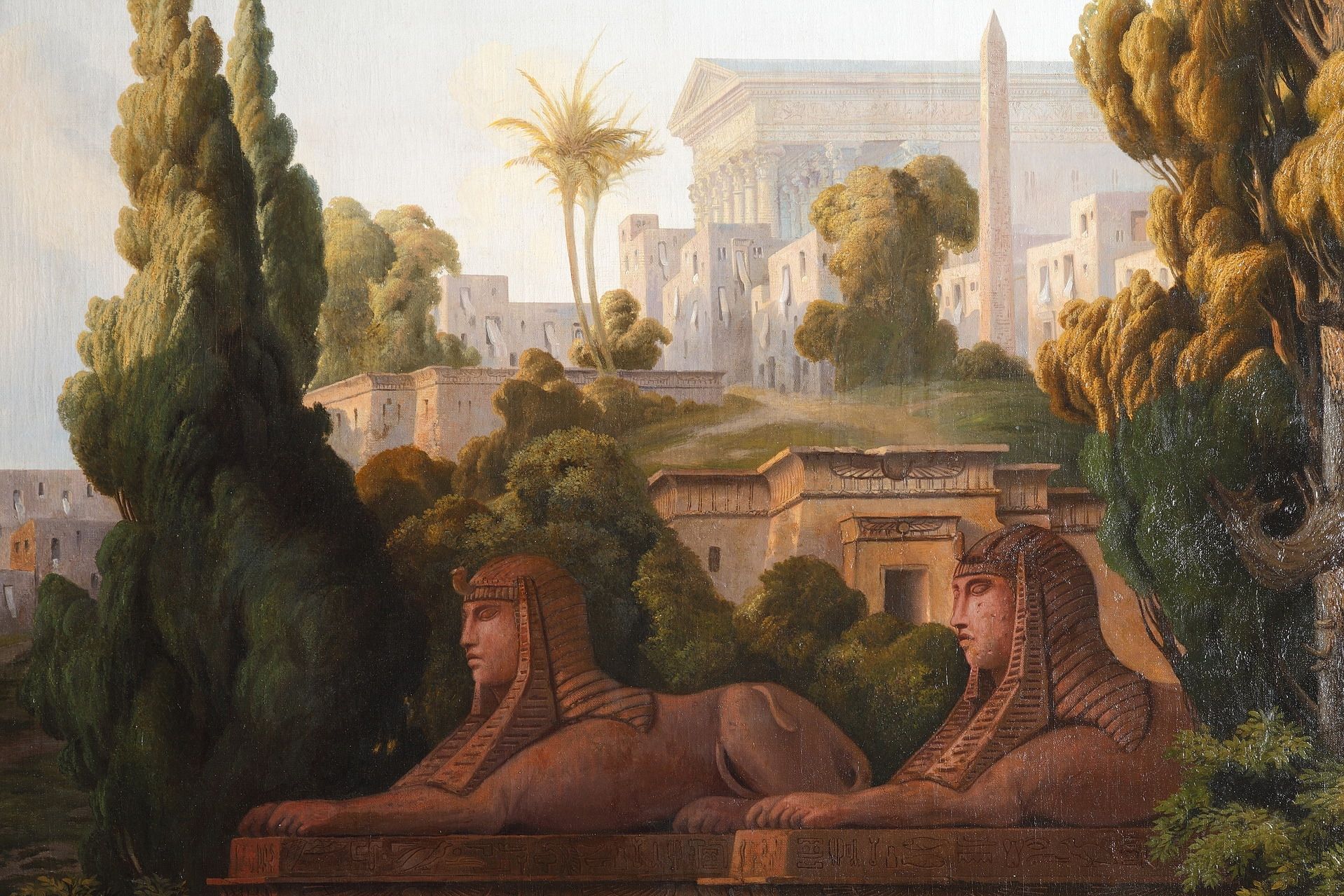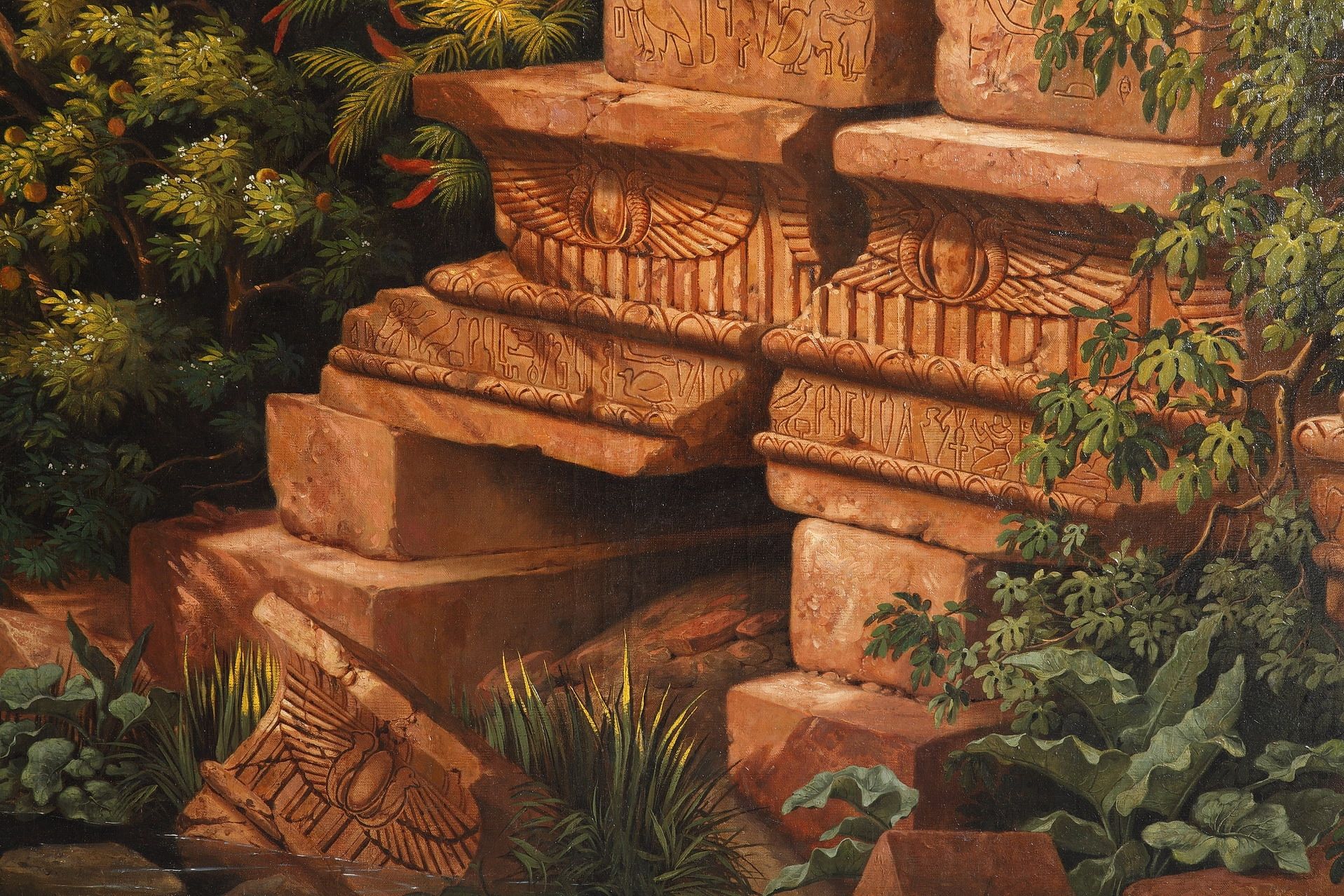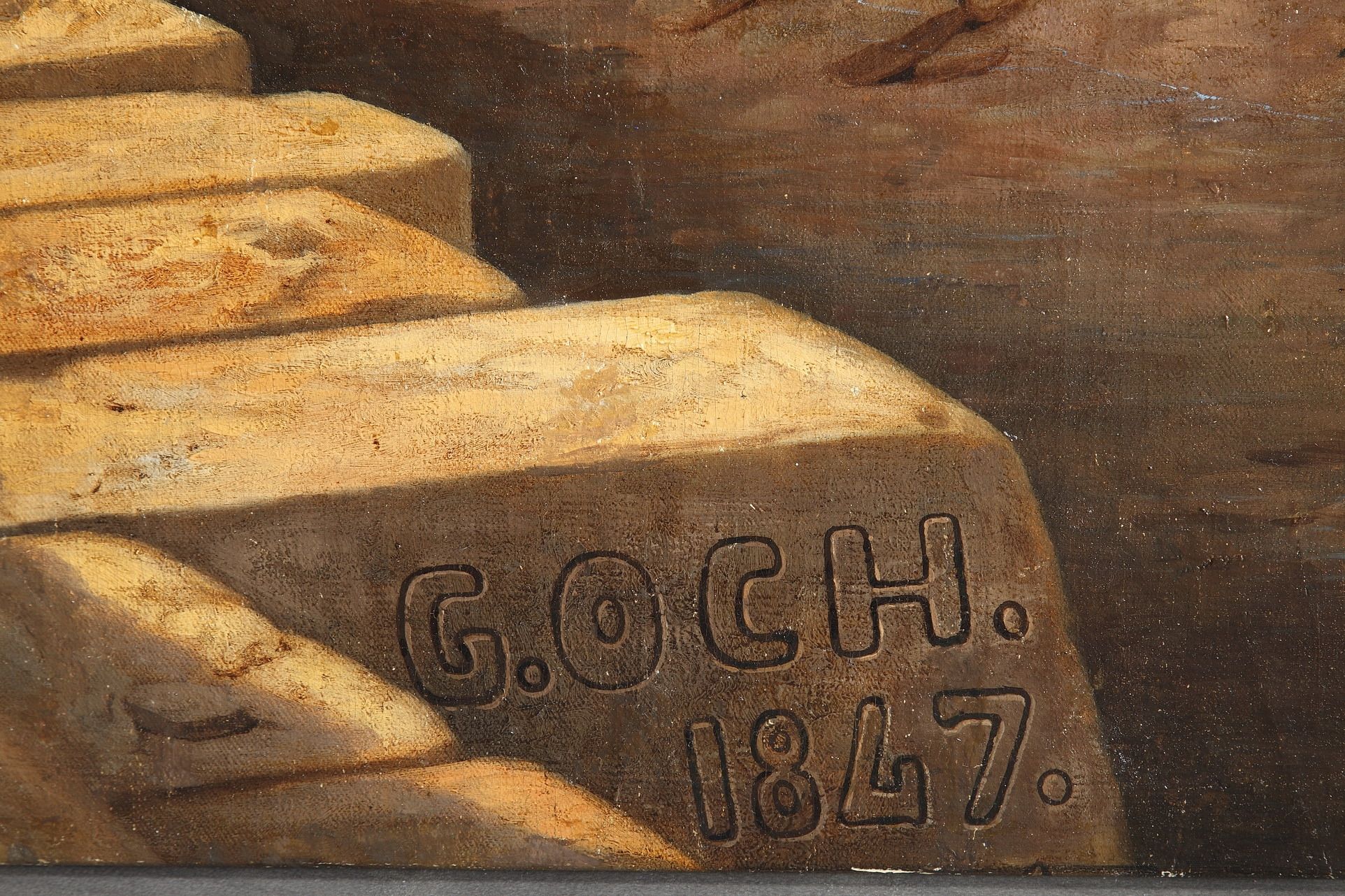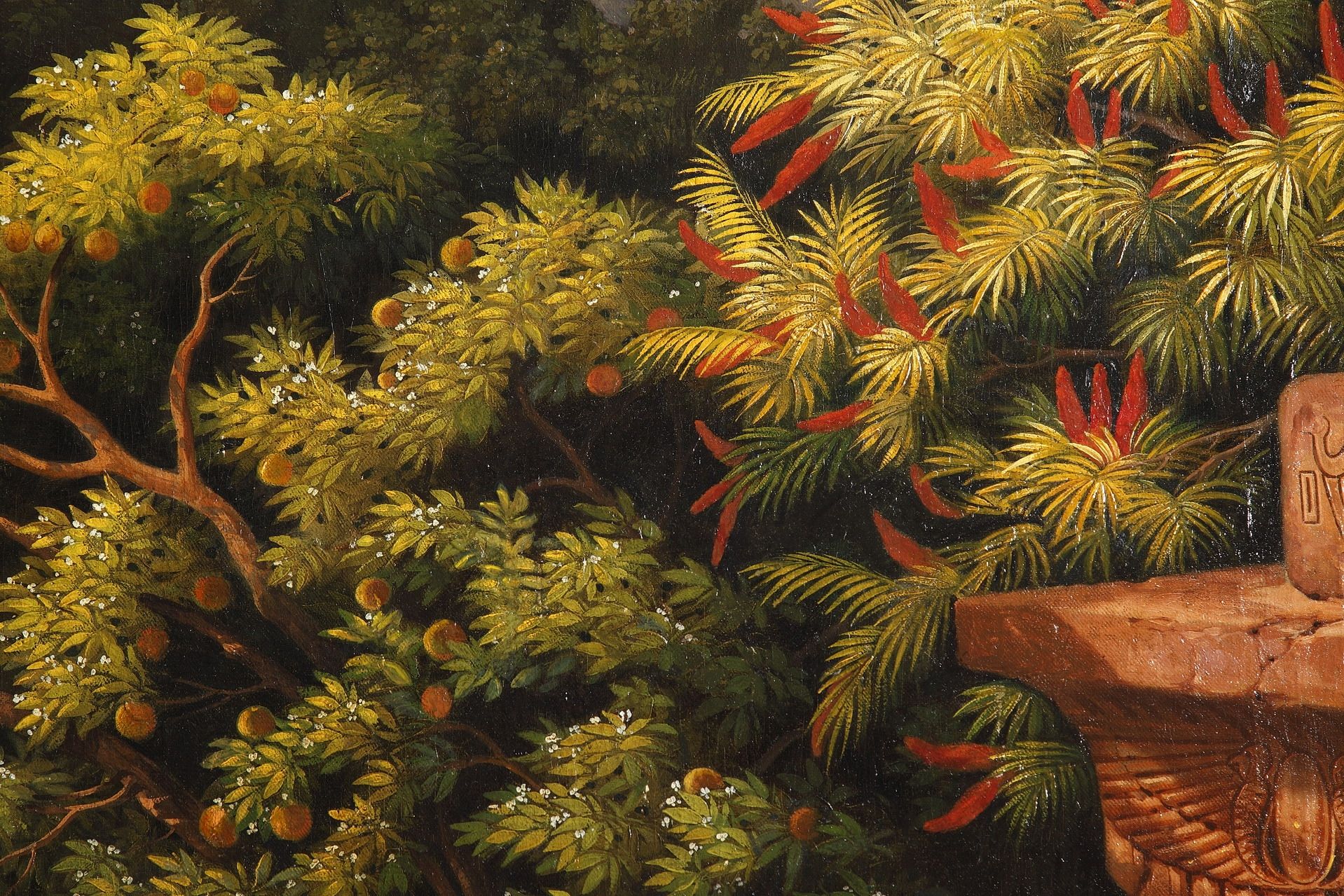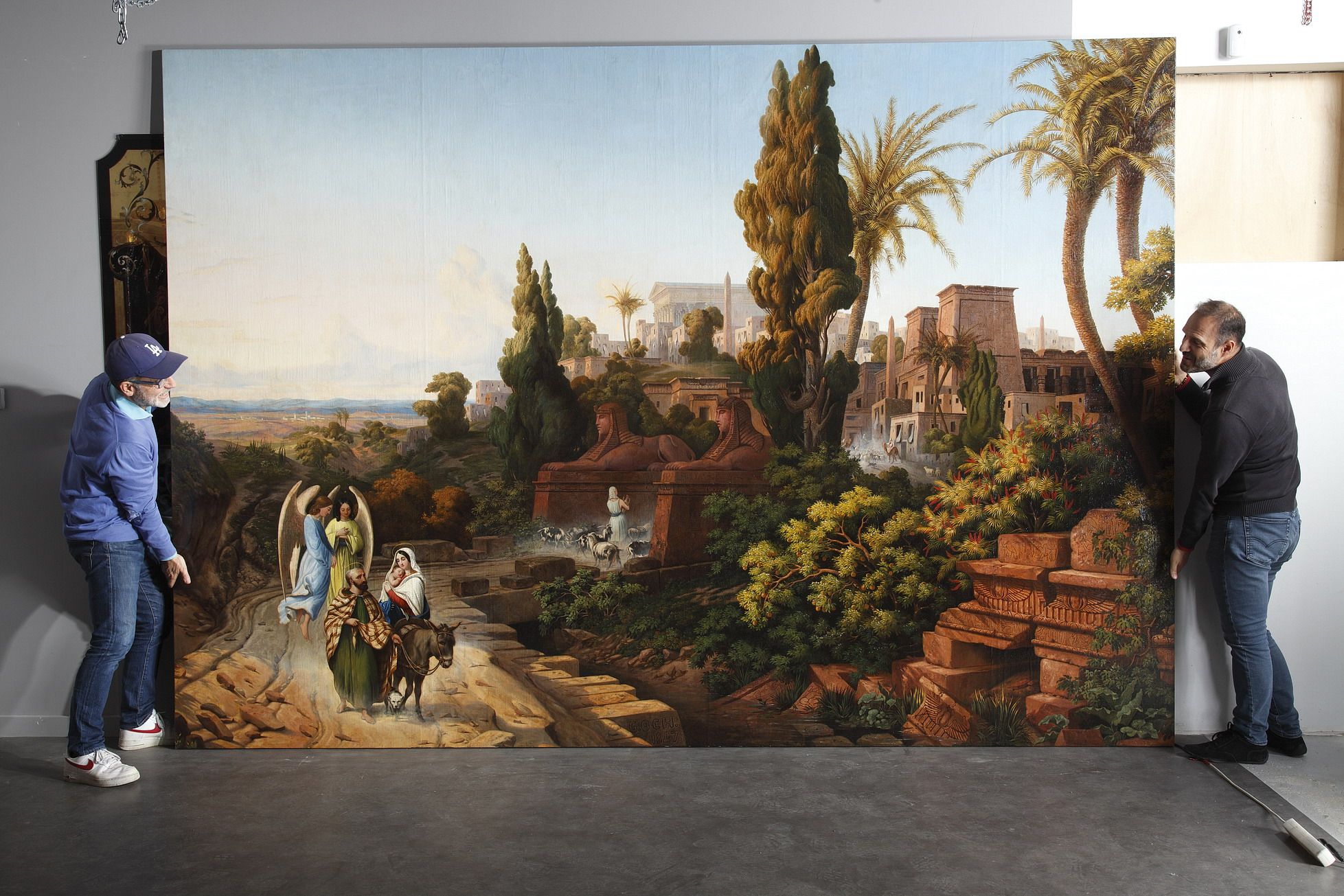An incredible acquisition: "The Holy Family's Journey to Egypt" by Georges Och
25.10.19
Georges Och, a great unknown
Georges Och was a French landscape painter born in 1798. To date, little is known about the life and work of this artist, who rubbed shoulders with the theater and official salons under the Restoration and the July Monarchy.
He is listed in several artists' dictionaries as a landscape painter and pupil of Ciceri1. In 1831, Och lived at 50, quai de la Mégisserie, Paris2. In 1844 and 1848, he exhibited three landscapes at the Salon, before moving to 68 rue des Granges, Besançon3.
Georges Och is above all a landscape painter. He was particularly interested in historical landscapes, a genre appreciated at the Salon and in official circles. In 1844, he sent "Paysage avec animaux" and "Un chalet, vue prise à Thun (canton de Berne)", a souvenir of a trip to Switzerland, to the Salon4. At the 1848 Salon, the canvas "Voyage de la Sainte Famille en Egypte, paysage historique "5 is listed at catalog no. 3472. Finally, among his best-known works, we consistently cite two panoramic landscapes: "Le panorama voyageur" and "Une vue de Paris, prise du haut des tours de Notre-Dame"6.
Georges Och, Ciceri's pupil
Pierre-Luc Charles Ciceri (1782-1868) was one of the most illustrious theater decorators of the 19th century. A skilled landscape painter, Ciceri began training in 1804 in the Paris Opera painting studio under Degotti and then Isabey, and quickly rose through the ranks. In 1815 he was appointed chief painter, a title rarely given to a landscape painter, which he retained until his retirement in 1848. In addition to his work for the Théâtre de l'Opéra, Ciceri was involved in the creation of sets for major Parisian and provincial theaters, as well as accepting commissions from private individuals.
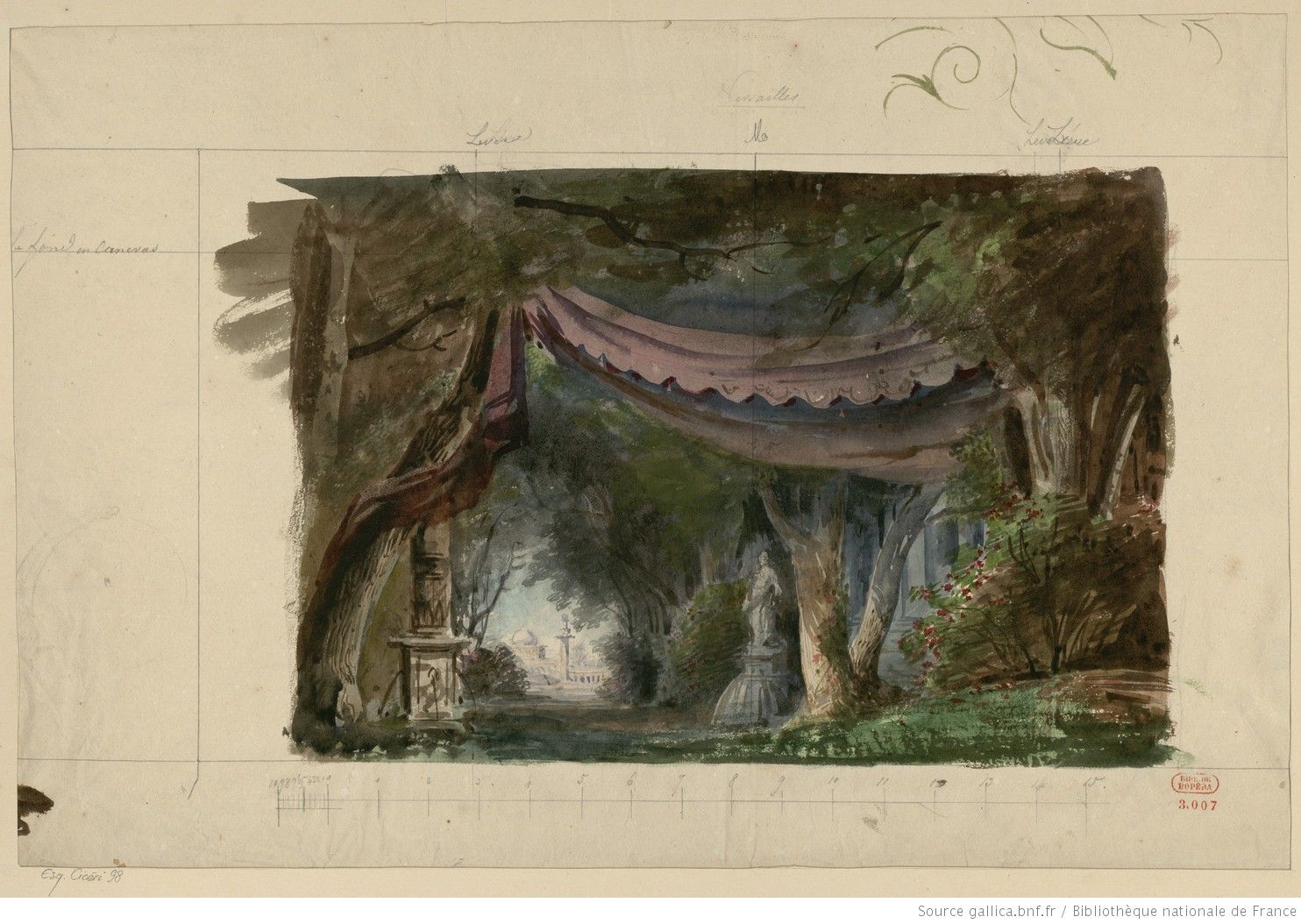
In addition to restoring antique decors, Ciceri developed landscape decor models that served as benchmarks. He imagined astonishing historical, mythical and antique settings, filled with the decorative luxury of historical research.
The Romantic era developed a new idea of theater, in which the staging of the text took on great importance. Costume designers and set decorators studied aspects such as historical fidelity, local color (exoticism) and topographical realism. Plays such as Alexandre Dumas' "Henri III et sa sœur", Vigny's "Le More de Venise" and Victor Hugo's "Hernani" feature historically documented sets based on Ciceri's models.
Around 1817, Ciceri opened his own painting studio. He founded a consortium of set painters who worked for all the major theaters in Paris: the Théâtre Italien, the Comédie française, the Odéon, the Gymnase and the Théâtre de la Porte Saint-Martin. Located in the workshops of the Opéra, in the Faubourg Poissonnière, his workshops welcomed all the future great decorators of the century: Charles Séchan, Edouard Despléchin, Jules Diéterle and Léon Feuchère. During the years 1833-1839, some of these young decorators set up their own workshops, joining forces with other decorators working in the workshops of the Opéra and the Comédie française. After the company went bankrupt in 1848, Ciceri's son and sons-in-law took over management of the workshop.
Surprisingly, neither Barry Daniels7, nor Nicole Wild8, two reference authors on theatrical décor in the Romantic period, mention Georges Och among Ciceri's students. Och's time in Ciceri's studio was probably short-lived. The absence of his name can also be explained by a common practice of the time: set designs created in a workshop under the direction of a chief decorator often make no mention of pupils. Finally, if Och does not appear as a decorator or collaborator of Ciceri or one of his pupils, who later joined forces and set up workshops, it is because he did not follow his master's career as a decorative painter, and turned instead to landscape painting.
Georges Och's only known decorative project to date is the ceiling of the Théâtre de La Chaud-de-Fonds in Switzerland, which he created in 1837 in collaboration with decorator Jean-Louis Chenillon. It consists of 12 velum panels depicting orientalized female figures: eight muses from Greek mythology and three personifications of the arts9.
Theater décor and its influence on Georges Och's work
Although Georges Och clearly did not turn to theatrical decor, his work was inspired by it. His paintings have many points in common with theatrical decoration, and more specifically with the work of Ciceri.
First and foremost, a taste for landscape. Like his master, Och loved wide panoramas. Cicéri had painted views of the Pyrenees, Italy and Switzerland, some of which were exhibited at the Salon10. He also collaborated on the illustrations for the edition of "Voyages pittoresques et romantiques dans l'ancienne France", a large-scale pictorial reportage published under the direction of Baron Taylor (1789-1879), from which some of his settings were inspired. Ciceri began as a landscape painter and remained so throughout his career. He brought this genre to its apogee, setting an example for the younger generation.
With his "Journey of the Holy Family to Egypt", Och followed in the tradition of the historical landscape, appreciated by the Académie and official circles11. According to academic ideology, nature should serve as the setting for historical, mythological or biblical scenes. The canvas's impressive format is that of history painting, of the "grand genre".
Historical painting was very popular in France in the 1830s and 1840s, represented in particular by Delaroche and Boulanger. In a realistic style, based on archaeological research, Romantic painters depicted emotional subjects of an intimate or domestic nature.
In the theater, a taste for historical fidelity gave rise to spectacular stagings. Ciceri painted astonishing reconstructions for historical shows, imbued with realism. Georges Och must have learned in his studio the importance of historical fidelity, realism and local color. Indeed, the models produced by the Ciceri workshop stand out for their precision of detail and meticulous reconstructions. But Ciceri's work retained both a poetic and theatrical side, as seen in Och's great painting "Voyage de la Sainte Famille en Egypte". Here, the landscape is imaginary, an Egyptian setting reinterpreted, imbued with local color but in a realistic style, where detail is represented in all its precision.
And yet, despite the demands of historical reality, Romantic decorators remained very sensitive to fantasy. (Deliberate) errors and anachronisms often crept into their compositions. Thus, on the same canvas or monument, styles from different eras and cultures can be found, while maintaining a certain homogeneity. In his " Journey of the Holy Family to Egypt ", Och juxtaposes Egyptian architectural decorations with hieroglyphs, sphinxes and obelisks, and exuberant vegetation with palms and Tuscan trees.
[1] Ch. Gabet, 1831, Bellier de la Chavignerie, 1882-1885.
[2] Ch. Gabet, 1831.
[3] Bellier de la Chavignerie, 1882-1885.
[4] Explication des ouvrages de peinture et dessins, sculpture, architecture et gravure des artistes vivants exhibited at the Musée Royal on March 15, 1844, Paris, Vinchon, 1844.
[5] Explication des ouvrages de peinture et dessins, sculpture, architecture et gravure des artistes vivants exposés au Musée national du Louvre le 15 mars 1848, Paris, Vinchon, 1848.
[6] Ch. Gabet, 1831, Bellier de la Chavignerie, 1882-1885, Bénézit, 1956-1961
[7] Barry Daniels, 2003.
[8] Nicole Wild, 1987 and 1993.
[9] LAURENTI WYSS, Lisa, 2011; Yvonne Tissot, 2003.
[10] JOIN-DIÉTERLE, Catherine, 1988.
[11] Historical landscapes have been awarded the Grand Prix de Rome since 1827.
Bibliography
- Explanation des ouvrages de peinture et dessins, sculpture, architecture et gravure des artistes vivants exposés au Musée Royal le 15 mars 1844, Paris, Vinchon, 1844.
- Explanation des ouvrages de peinture et dessins, sculpture, architecture et gravure des artistes vivants exposés au Musée national du Louvre le 15 mars 1848, Paris, Vinchon, 1848.
- BELLIER DE LA CHAVIGNERIE, Emile, Dictionnaire général des artistes de l'École française depuis l'origine des arts du dessin jusqu'à nos jours : architectes, peintres, sculpteurs, graveurs et lithographes, work begun by Émile Bellier de La Chavignerie ; continued by Louis Auvray, Paris, Librairie Renouard, 1882-1885.
- BENEZIT, Emmanuel, Dictionnaire critique et documentaire des peintres, sculpteurs, dessinateurs et graveurs de tous les temps et tous les pays. Tome III. L-Z, Paris, Gründ, 1956-1961.
- DANIELS, Barry Vincent, Le décor de théâtre à l'époque romantique : catalog raisonné des décors de la Comédie-Française, 1799-1848, d'après les documents conservés dans les collections de la Bibliothèque nationale de France et de la Comédie-Française, Paris, Bibliothèque nationale de France, 2003.
- GABET, Charles, Dictionnaire des artistes de l'école française au XIXe siècle, Paris, Chez Madame Vergne Libraire, 1831.
- GOUSSET, Jean-Paul, RICHTER, Damien, "Les décors de scène conservés au théâtre de la Reine et à l'Opéra Royal de Versailles", in Versalia. Revue de la Société des Amis de Versailles, n°6, 2003, pp. 18-34. Available online: https: //www.persee.fr/doc/versa_1285-8412_2003_nu... [Accessed on 11/10/2019].
- JOIN-DIÉTERLE, Catherine, Les Décors de scène de l'Opéra de Paris à l'époque romantique, Paris, Tardy, 1988.
- LAURENTI WYSS, Lisa, "Le théâtre de La Chaux-de-Fonds : renaissance d'une salle "à l'italienne"?", in Kunst + Architektur in der Schweiz, n°62, 2011, pp. 22-25. Available online: https: //docplayer.fr/64704131-Le-theatre-de-la-ch... [Accessed 11/10/2019].
- LIÈVRE-CROSSON, Élisabeth, Du classicisme à l'académisme, Paris, Éditions Milan, 2008.
- TISSOT, Yvonne, Le Théâtre de La Choux-de-Fonds, une bonbonnière révolutionnaire : comment une petite ville horlogère se dota d'un théâtre en 1837, Lausanne, Payot Lausanne, 2003.
- WILD, Nicole, Décors et costumes du XIXe siècle. Tome I: Opéra de Paris, Paris, Bibliothèque nationale, 1987.
- WILD, Nicole, Décors et costumes du XIXe siècle. Tome II : Théâtres et décorateurs, collections de la Bibliothèque-Musée de l'Opéra, Paris, Bibliothèque Nationale, 1993.


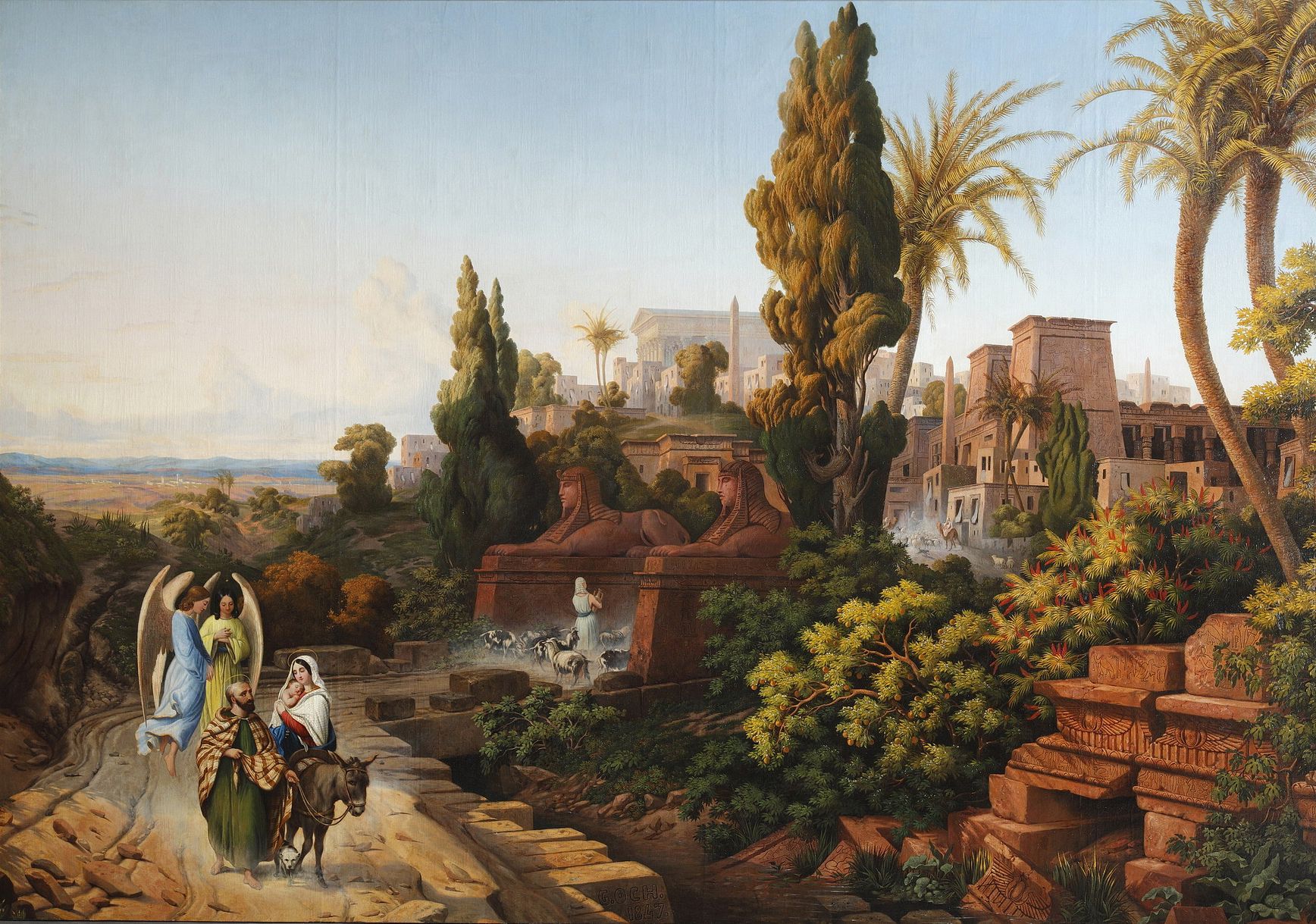 Georges Och, The Holy Family's Journey to Egypt
Georges Och, The Holy Family's Journey to Egypt Detail of the painting by Georges Och
Detail of the painting by Georges Och